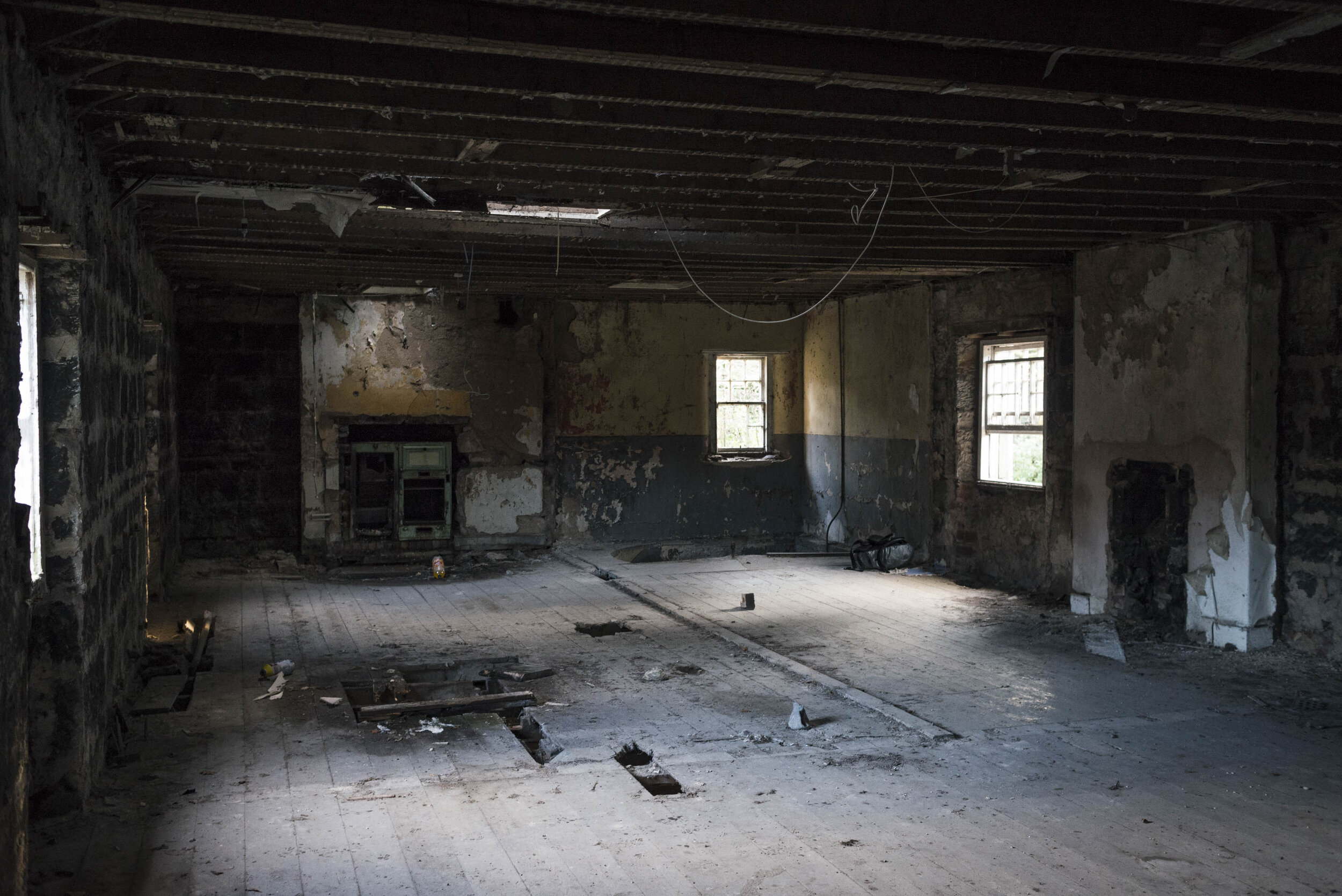A friend of mine has a habit of finding cool places to visit. So much so that in the last few days I asked her to share her secrets, rather than have me ask where she was when I see her photos/videos on social media (Atlas Obscura was her answer, if you’re interested).
She posted a video, just a few seconds long, of a dilapidated house in a misty valley. When I enquired about the location, she explained that a drained reservoir had exposed some buildings that had previously been submerged.
I knew immediately that I had to visit. I had no idea how long the reservoir would be empty. Google didn't provide any enlightenment on that front so i figured that it would be best to go sooner rather than later. It would hardly be the first time that I'd gone off to photograph something, only to find that the circumstances had changes entirely and that I had missed the boat.
* The reason the reservoir was empty was a simple one. It had run out of water. I had assumed it was for maintenance but apparently we just had a particularly dry summer and we had used it all up. This reservoir is one of 5 in the area so we're not about to run out just yet.
It was Friday and I had the weekend mornings free. Saturday would be foggy and overcast, Sunday would be rain. Foggy and overcast is some of my favourite weather to photograph. By contrast, rain is down there with my least favourites. It was an easy choice to make. For the first time in a while, I was heading out early to photograph something entirely new. It was exciting.
The weather on the drive up was promising. Foggy enough to provide atmosphere, but clear for a hundred yards or so before things started fading into the white.
Roughly a mile before reaching my destination, things went wrong. The fog vanished and the sun appeared. While I'm sure the majority of the population would see this as a good thing, for me, this was disastrous. I was looking for atmosphere and isolation. Now it looked like a summer's day. Blue skies all round. Eurgh.
I'm not going to lie, I was furious! How dare the weather do this to me, in Scotland no less. This was a betrayal. And it's what I get for showing enthusiasm. Knowing full well that the images in my head were now impossible, I continued on to get a look at the site. You never know what might present itself.
What presented itself might not have been what I was looking for but it was certainly worth exploring. Hulking concrete structures that carved through the landscape. Some of them could be mistaken for WWII bunkers. The photo above looks like it could have been taken in France in 1945.
I was still angry about the lovely weather, though. I wasn't going home empty handed but I would be leaving without the photos I came for, which is always frustrating. The good thing was that the sunshine was doing a good job of drying out the reservoir bed, which meant I could wander about without sinking to my knees in silt. Good thing too, as I realised later on that I had left my phone in the car. Had I fallen and got stuck in the mud, I would have been there for a while.
My favourite shot of the day came as I had decided that I was finished with the reservoir floor. The dam wall is an impressive chunk of concrete. It's hardly the Hoover Dam but when it's entirely exposed like this, it's imposing.
Looking over the edge, I could see that the patterns on the ground looked cosmic. It was like looking at the surface of Jupiter. The above shot, is looking straight down from the dam wall.
I headed back to the car, annoyed that I hadn't got what I'd come for but glad to be going back with a few interesting photos. And I'd been able to enjoy the morning walk.
It occurred that this was one of the benefits of shooting for your own sake. Had I been on a paid job to get a specific thing, the option to simply change tack and go for something else wouldn't have been an option. So it's good to freestyle it sometimes and see what happens. It also means that when conditions aren’t favourable, it’s not the end of the world.
I did photograph the resurfaced house and the dam wall in its entirety but the light was all wrong for them so they aren't photographs that I would share. I'll treat them as location scouting and hope that by the time I get back up there, the water hasn't been replenished.
The last photo here is an alternative take. I don’t normally share my alternates as I prefer to curate the best ones and leave it at that but I liked the optical illusion with this. Like the above image off the edge of the dam, this is a top down view from the top to the ground. Except this shot includes my feet. The gray line down the middle of the photo is the sheer dam wall. Everything to the right of that line is 50 feet lower than everything to the left of it.






















